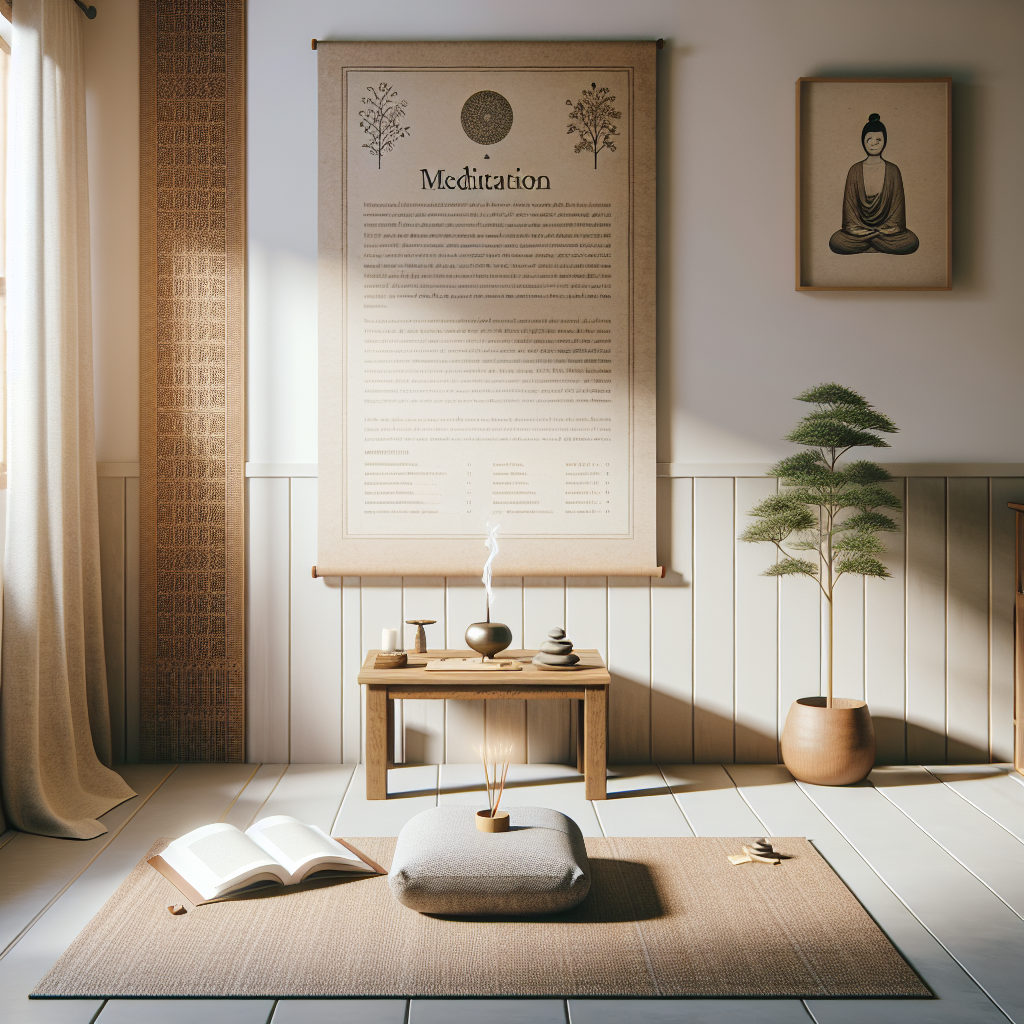
How to learn meditation at home
The Ultimate Guide to Learning Meditation at Home
Meditation is a powerful practice that can enhance your mental clarity, emotional stability, and overall well-being. With its roots in ancient traditions, it's a technique practiced by many around the world. For those new to meditation or looking to develop their practice further, learning how to meditate at home can be an effective way to incorporate this enriching practice into your daily routine. This comprehensive guide will walk you through the steps, techniques, and tips to embark on your meditation journey from the comfort of your own home.
Understanding Meditation
Before diving into the "how," it’s essential to understand what meditation truly is. At its core, meditation involves focusing the mind to achieve a mentally clear and emotionally calm state. Here are some key points to grasp:
- Breath Control: Meditation often focuses on the breath, which helps anchor the mind.
- Presence: It encourages living in the moment, reducing stress and anxiety.
- Impact on Well-being: Regular practice has been linked to reduced symptoms of anxiety, depression, and stress.
Choosing the Right Space for Meditation
To effectively learn how to learn meditation at home, it’s crucial to create a dedicated space that invites peace and calm. Here are some tips to set up your meditation area:
- Quiet Location: Find a place in your home free from noise and distractions.
- Comfortable Seating: Invest in a yoga mat, cushion, or chair that provides comfort during your practice.
- Minimalist Setup: Keep the area minimalistic with few distractions; you might add a plant or a candle to enhance the vibe.
Types of Meditation Techniques
There are numerous meditation techniques, each bringing its unique benefits. As you learn meditation at home, it’s worth exploring different styles to see which resonates with you:
- Mindfulness Meditation: Focuses on being present and aware of your thoughts and feelings without judgment.
- Guided Meditation: Involves following the instructions of a recorded meditation to visualize peaceful scenarios or achieve specific goals.
- Love-Kindness Meditation (Metta): This practice centers on sending goodwill, kindness, and warmth towards others.
- Transcendental Meditation: A simple technique using a mantra to settle the body into profound rest while the mind achieves a state of pure consciousness.
Steps to Start Your Meditation Practice
Following a structured approach can help ease you into meditation. Here's a step-by-step guide to help you initiate your meditation practice:
- Set Your Intention: Before starting, clarify what you hope to gain from meditation, whether it’s stress relief, enhanced focus, or personal growth.
- Choose a Time: Determine a specific time to meditate daily; consistency helps build habits. Many people find early mornings or just before bed ideal.
- Start Small: If you're new to meditation, start with just 5-10 minutes a day and gradually increase the duration as you become more comfortable.
- Focus on Your Breath: Close your eyes and take deep breaths. Notice the air entering and leaving your body, allowing your thoughts to fade away.
- Return to Your Breath: If your mind wanders, gently bring your attention back to your breath without judgment.
Implementing a Routine
To effectively learn how to learn meditation at home, incorporating a routine is vital. Here are some strategies to establish a consistent meditation practice:
- Set Reminders: Use your phone or calendar to set daily reminders to meditate at the same time each day.
- Join Online Communities: Engage with online meditation groups or forums to stay motivated
- Track Your Progress: Consider journaling about your experiences, feelings, and insights after each session.
Utilizing Technology and Resources
In today's digital age, there is a vast array of resources available for those wishing to learn meditation at home. Consider these options:
- Meditation Apps: Applications like Headspace, Calm, and Insight Timer offer guided sessions that cater to various skill levels.
- YouTube Channels: Channels focused on mindfulness can provide valuable insights and video guides.
- Online Courses: Websites such as Udemy and Coursera offer full courses on mindfulness and meditation techniques.
Overcoming Common Challenges
When starting a meditation practice, various challenges might arise. Here’s how to address typical hurdles:
"The journey of a thousand miles begins with one step." – Lao Tzu
Difficulty with Focus
It’s common to struggle with keeping your mind from wandering. Instead of forcing focus, calmly return your attention to your breath or mantra when distractions occur.
Boredom or Frustration
If you find yourself bored, try varying your meditation techniques or experimenting with guided sessions. Variety can keep your practice fresh and invigorating.
Time Constraints
Even on busy days, try to incorporate brief meditative moments. A few minutes of deep breathing can provide immediate relaxation and clarity.
Expanding Your Practice
As you become more comfortable with meditation, consider expanding your practice:
- Explore Advanced Techniques: Delve into practices like yoga, sound healing, or movement meditation to diversify your meditation experience.
- Attend Retreats: If opportunities arise, consider participating in weekend meditation retreats to deepen your practice.
- Read Books on Meditation: Numerous books offer in-depth perspectives on various meditation traditions and practices.
Conclusion: Embrace Your Meditation Journey
Learning to meditate at home is a fulfilling journey that requires patience and practice. Embrace each session as an opportunity for self-discovery and growth. With a mindful approach and a commitment to consistency, you'll gradually experience the myriad benefits of meditation. From stress relief to improved focus, the gift of meditation is one that keeps on giving.
Remember, the most important part of this journey is to be gentle with yourself. It's perfectly acceptable to experience ups and downs as you learn how to learn meditation at home. Celebrate the small victories, and don’t hesitate to revisit your intentions along the way.
As you embark on this transformative practice, may you find peace, balance, and a deeper connection to yourself and the world around you.
By Guest, Published on October 23rd, 2024